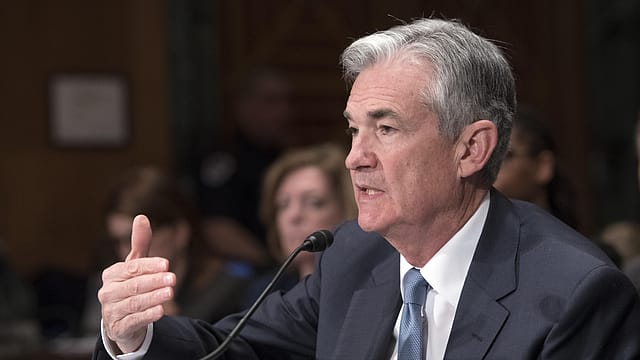US Fed’s Jerome Powell continues the tightening cycle
ADVERTISEMENT

When Jerome H. Powell took over the reins of the US Federal Reserve as its sixteenth chair in early February, he had a task in hand: to stay the course on monetary policy if the nation’s economy continued on the growth path.
As a member of the board of governors, since May 2012, Powell consistently voted with his predecessor—Janet Yellen—to slowly hike interest rates.
And, on March 21, at the two-day Federal Open Market Committee (FOMC) meeting led by Powell, the Fed effected the sixth interest rate hike. The 0.25% hike in the rate takes the upper range of the US interest rates, up from 1.50% to 1.75%.
The FOMC also revised the US GDP growth forecast for 2018 from 2.50% to 2.70%.
“This reaffirms that US and global economy will continue to undergo a steadfast recovery,” says Rana Kapoor, managing director and chief executive officer (CEO) of Yes Bank. “Amid encouraging global tailwinds, along with domestic reforms unfolding, I am confident that the Indian economy will grow above 7.8% in FY19,” Kapoor adds.
January 2026
Netflix, which has been in India for a decade, has successfully struck a balance between high-class premium content and pricing that attracts a range of customers. Find out how the U.S. streaming giant evolved in India, plus an exclusive interview with CEO Ted Sarandos. Also read about the Best Investments for 2026, and how rising growth and easing inflation will come in handy for finance minister Nirmala Sitharaman as she prepares Budget 2026.
In a research note titled “Fed’s mildly hawkish stance underwhelms markets”, DBS Bank’s FX Strategist Philip Wee, and Rates Strategist Eugene Leow highlighted that overnight, USD rates were sanguine as the Fed delivered a 25 basis points hike while projecting a steeper tightening path for 2019 and 2020 (taking Fed funds rate to 3.4% by the end of the period).
“Notably, the median projection for 2018 stays at three hikes, easing fears that rate hikes would be aggressively frontloaded,” Wee and Leow wrote.
The duo also added that after the sell-off over the past few months, US dollar rates are probably close to neutral with the market requiring greater evidence of growth/inflation before taking USD rates another leg higher. “Notably, while the Fed sees five-six hikes by 2020-end, the market is only willing to price in another three-four.”
The Fed noted that, on a 12-month basis, both overall inflation and inflation for items other than food and energy have continued to run below 2%. It is expected to move up in coming months and to stabilize around the FOMC's 2% objective over the medium term. From 1.5%, the Fed has forecast core inflation to increase to 1.9% and 2.1% at the end of 2018 and 2019 respectively. Until end of 2019, inflation, in Fed's view, seems to remain in its comfort zone of 2%.
“Reading the entire data points it would appear that, barring the dot plot indication of two more hikes this year, the rest of the data is more hawkish than expected,” says Vinod Sharma, head-private client group and capital market strategy at HDFC Securities.
The dot plot signals individual members' rate expectations.
Reading the Fed action as neutral to positive for the Indian markets, Sharma says he finds it surprising that the Fed has not revised its inflation projection upwards. “The Fed kept its inflation forecast for the next two years the same even though it sees a stronger economy and falling unemployment rate,” says Sharma.
“We, therefore, will take the incremental hike that the dot-plot is indicating for 2019 with a pinch of salt,” he adds. “If inflation does not pick up, it will be difficult for the Fed to walk its talk on rates.”
As for interest rates, and the Reserve Bank of India (RBI) taking cues from its US counterpart, Sharma of HDFC Securities does not see RBI being pressured into hiking rates. Even on the impact of the future hikes, Sharma seems less perturbed.
“History has shown that unless the real interest rates rise beyond 2.5% the markets can very well take these hikes into stride,” he says.
